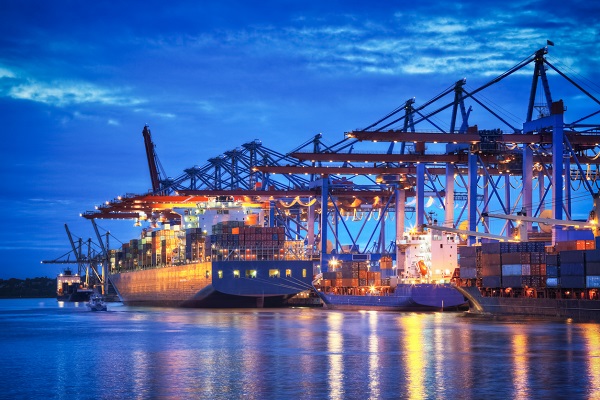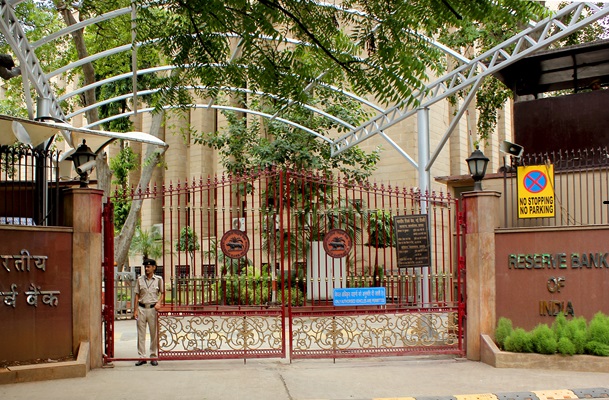.png)

Dr Hemachandra Padhan is an Assistant Professor, General Management and Economics, IIM Sambalpur.*
October 23, 2025 at 11:24 AM IST
The world isn’t in a supply-chain crisis anymore. But neither has it gone back to the easy flow of trade we once took for granted. The cargo still moves, just slower. Costs have come down, but not quite to where they were. For India, this half-fixed, half-fractured system is reshaping the rhythm of three big sectors — metals, energy, and grains. Each one is sitting at the uneasy junction of domestic ambition and global uncertainty.
The New York Fed’s index of global supply pressures shows what everyone already senses: the worst is over, but the strain hasn’t vanished. It’s simply settled into the system. What used to be an exception is now the baseline.
Metal Tightrope
Refined copper demand is expected to more than quadruple by 2047, from about 450,000 tonnes today to over two million. But smelting capacity hasn’t caught up. This implies rising import dependence unless refining, recycling, and mineral exploration scale rapidly. Volatility in international copper prices, ranging between $8,500–10,000 per tonne, mirrors logistical uncertainties — from mine output disruptions in Latin America to freight delays in Asian ports. For India, where infrastructure expansion is a national priority, supply-chain friction translates directly into project cost overruns.
Every late shipment or vessel delay doesn’t just inflate project budgets. It slows the story India is trying to tell: that it can build faster, cleaner, and cheaper.
Energy Crossroads
Recent moderation in crude oil prices due to improved global inventories offers temporary relief, but shipping insurance costs and regional geopolitical tensions continue to introduce unpredictability. Diversification of import sources, along with strategic petroleum reserves and localised refining, remains central to India’s energy security calculus.
Grain and Gain
The Black Sea corridor disruptions and elevated freight costs have made India’s grain more attractive to importers in Asia and Africa. However, sustaining this role demands investments in grain terminals, cold chains, and digital logistics that ensure timely export movement and price stability.
The Connecting Thread
Port congestion, freight bottlenecks, and incomplete multimodal links still inflate costs. Projects like the Dedicated Freight Corridors and PM Gati Shakti offer a fix, but execution, as always, is the test.
Add to that the second layer of policy shocks from abroad. Export bans, tariff shifts, and strategic recalibrations elsewhere ripple straight into India’s import bills. “Friend-shoring” could help, but only if India’s own systems stay predictable.
And then there’s the data gap. Market intelligence often comes too late or too patchy to be useful. A sharper, real-time tracking and digital trade system could shave off the anxiety, and the costs, that come from not knowing.
India 2047 - A Forecast Matrix
|
Indicator |
2025 |
2030 |
2035 |
2040 |
2047 |
|
Copper Demand (Refined, kt) |
450 |
700 |
1,050 |
1,450 |
2,100 |
|
Avg. Copper Price (Real USD/t) |
9,000 |
9,500 |
10,500 |
11,000 |
12,000 |
|
Oil Consumption (mb/d) |
5.0 |
6.0 |
6.6 |
7.0 |
7.3 |
|
Non-fossil Share in Electricity (%) |
40 |
55 |
65 |
72 |
80 |
|
Renewable Capacity (GW) |
182 |
300 |
420 |
570 |
800 |
|
Wheat Production (MMT) |
117 |
123 |
127 |
126 |
120 |
|
Grain Exportable Surplus (MMT) |
20 |
30 |
35 |
30 |
25 |
|
Import Dependency (Copper/Ores, %) |
40 |
45 |
50 |
55 |
60 |
|
Logistics Efficiency Index (relative) |
Low |
Moderate |
High |
Strong |
World-class |
Note: All values represent approximate mid-range forecasts under stable global trade conditions. Price figures in real 2025 USD. Forecasting formula --
For policymakers, the quiet revolution lies in logistics reform. Every day saved at a port, every paper process replaced by a digital one, adds real money to competitiveness. Strategic reserves of crude and critical minerals can blunt the next external shock.
And for investors, patience will pay if they pick the right side of the turbulence. Copper, lithium, and rare earths tied to the clean-energy shift will create long-term stories, though they’ll come with plenty of short-term noise.
Risks and Contingencies
That’s the new normal. The countries that stay steady through it, adjusting faster than they react, will write the next chapter of global trade.
Yet, in that volatility lies India’s edge. The global supply chain is being rewritten into something slower, more regional, more uncertain. The countries that can navigate this new friction, not fight it, will shape the next chapter.
If India can match its infrastructure pace with its ambition, it could turn from a price-taker to a stabiliser in the world’s commodity map. By 2047, that would be a fitting way to mark a hundred years of independence. It would not just be self-reliance, but resilience.
Because resilience isn’t what you build in response to a shock. It’s what you prepare long before it hits.




